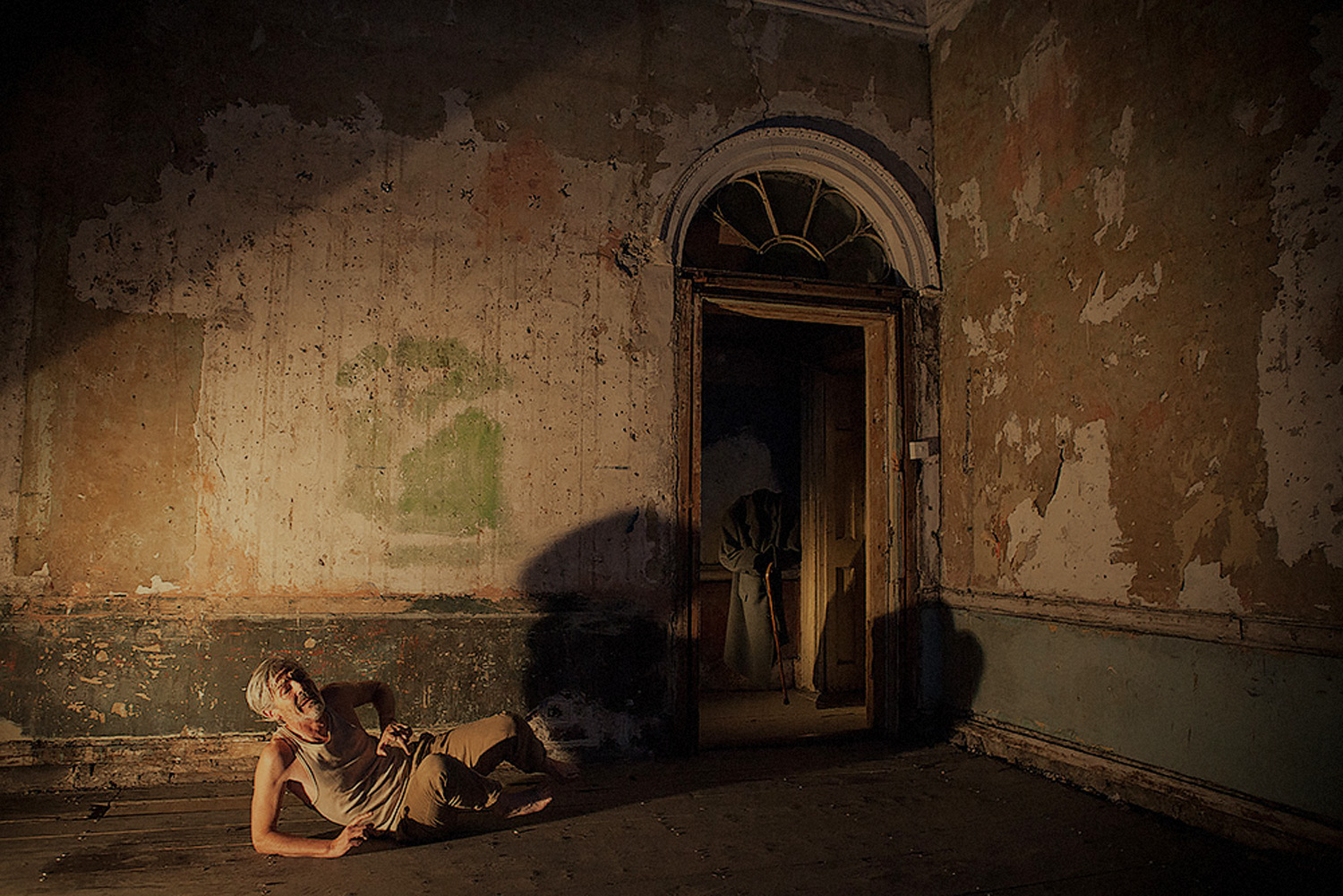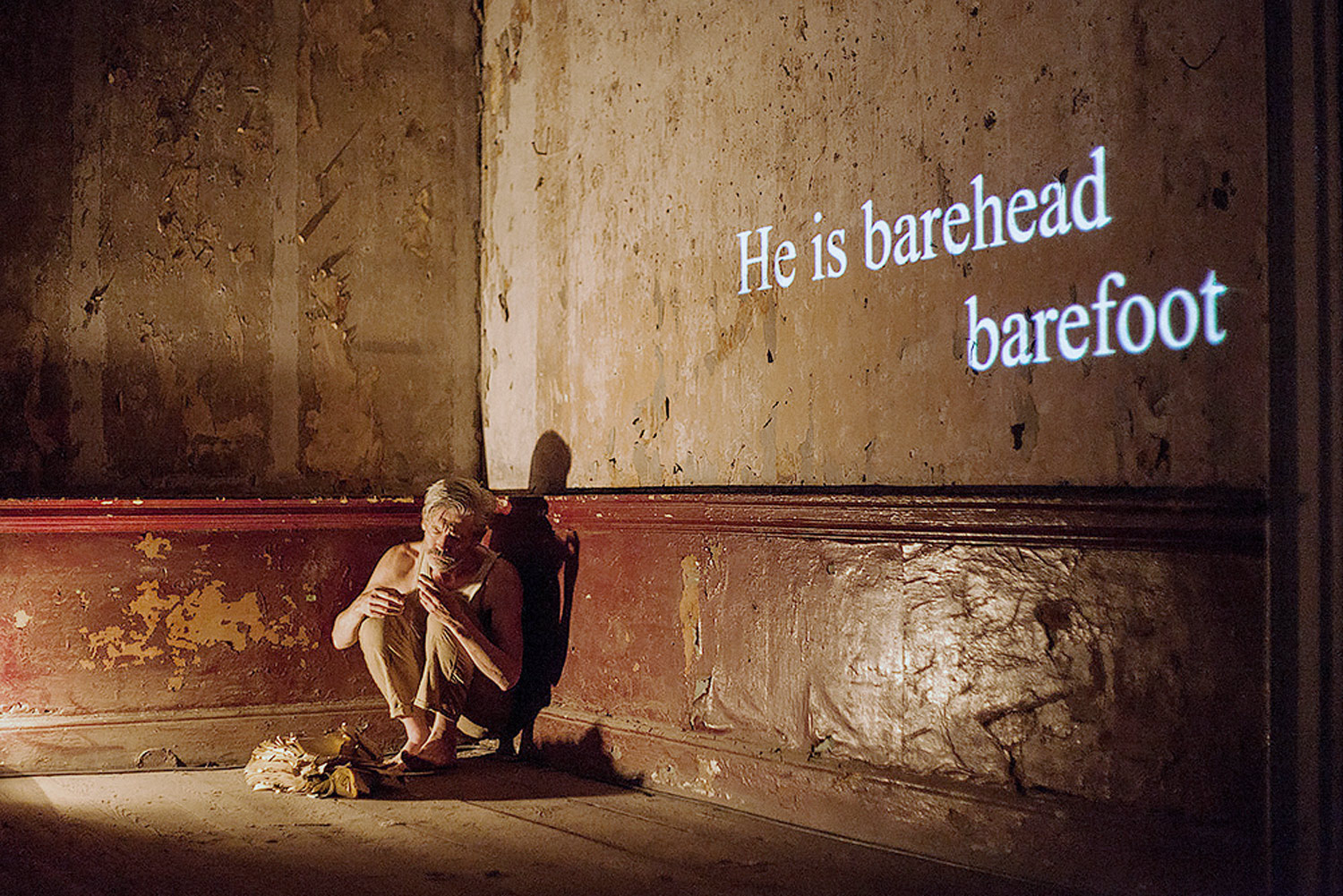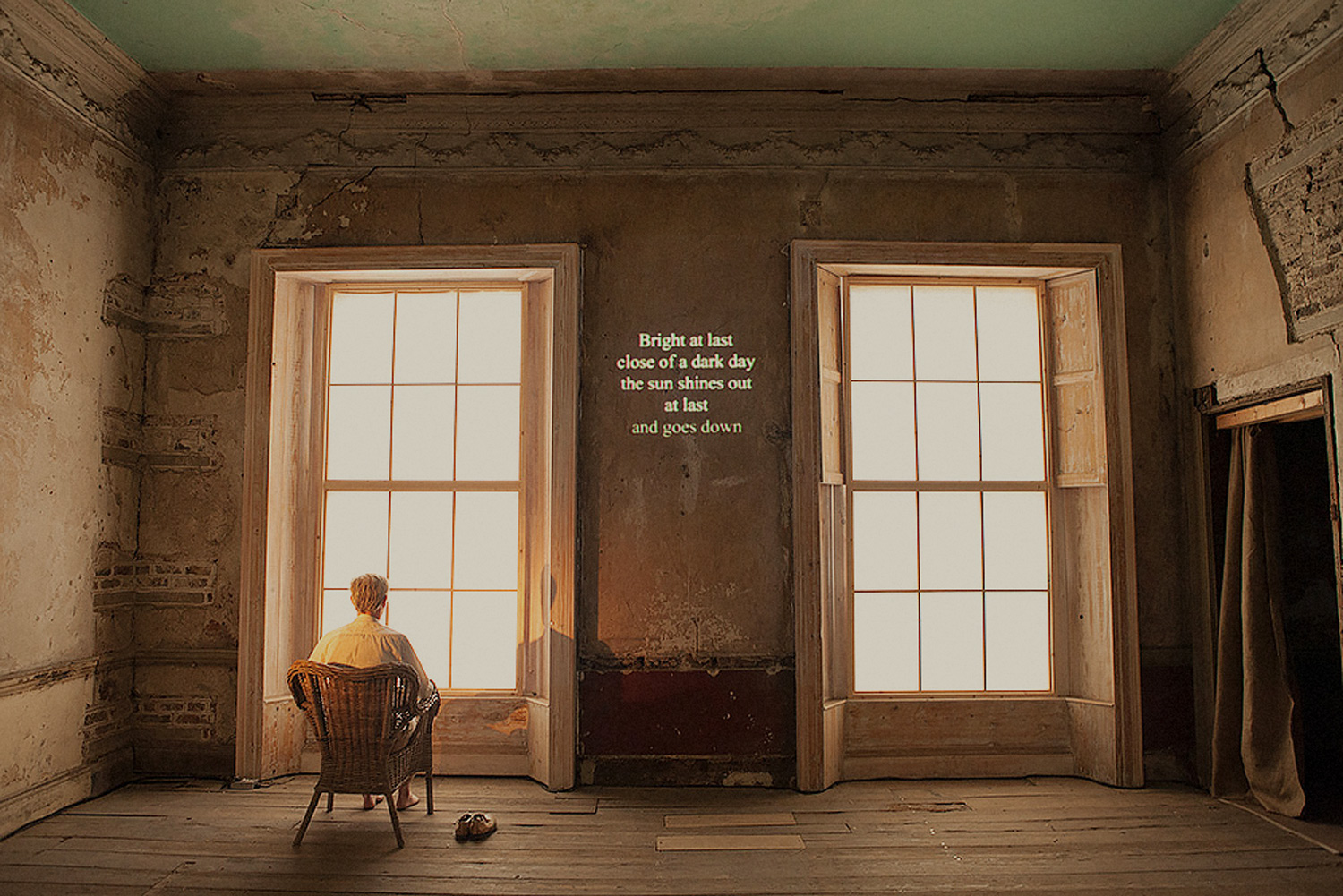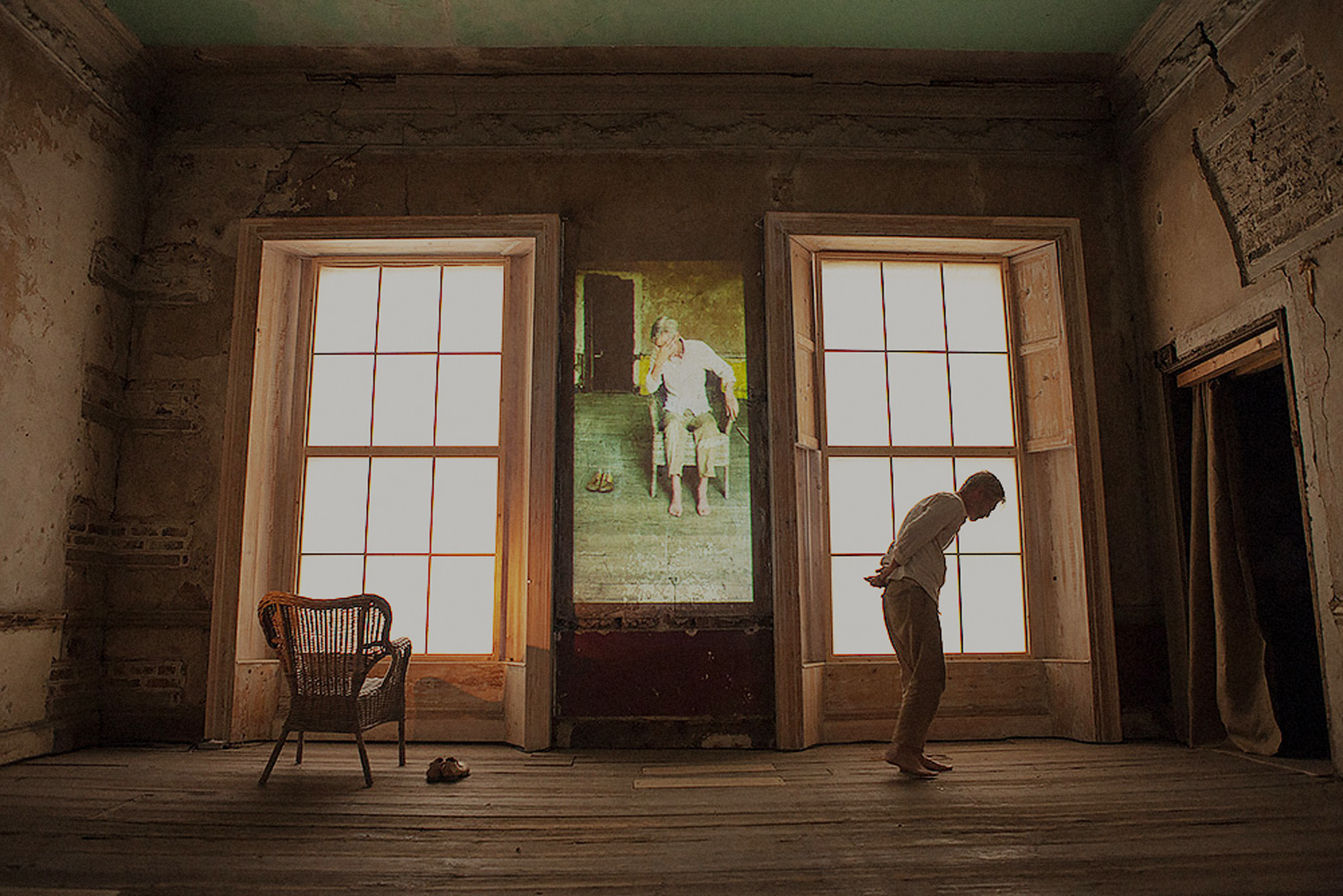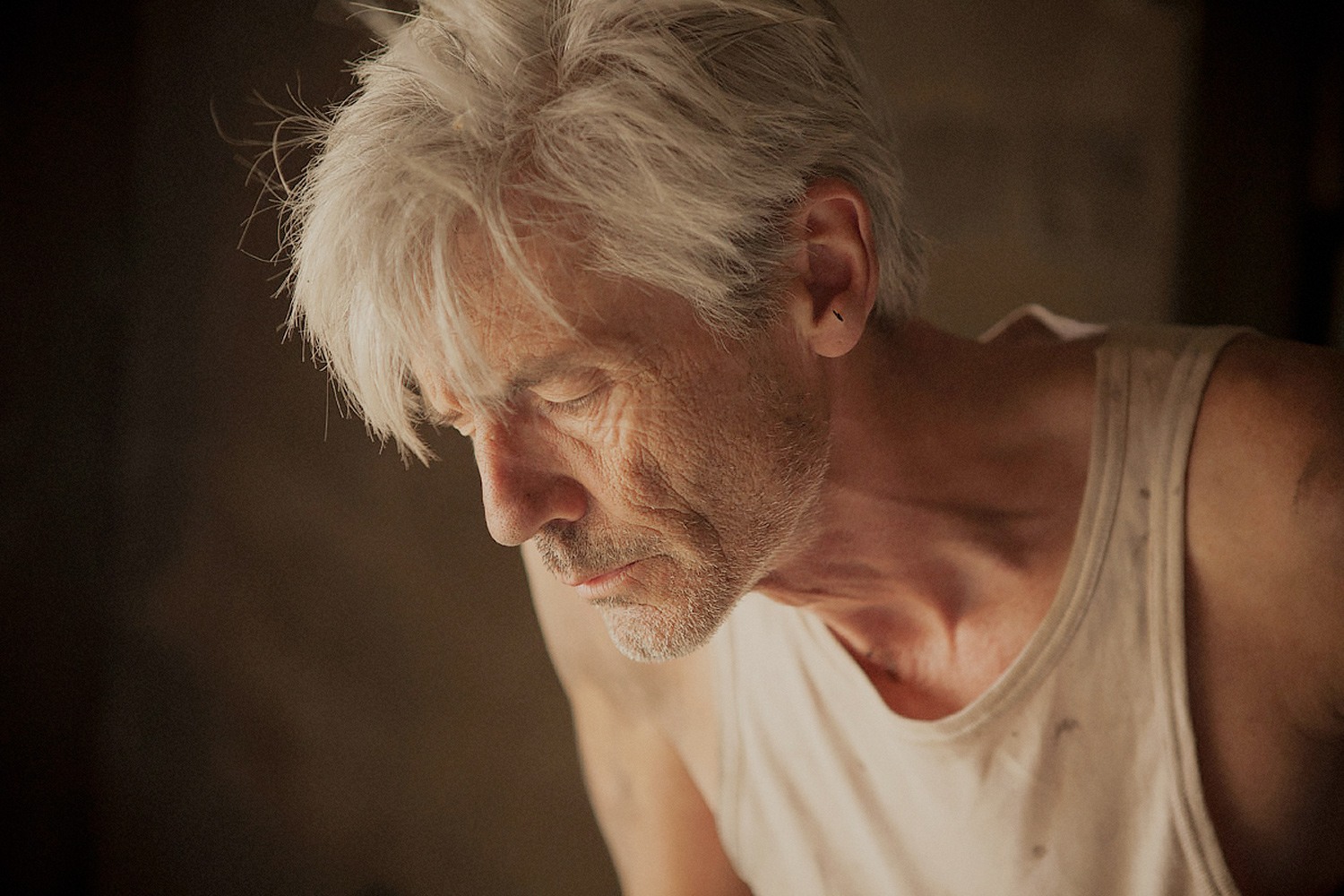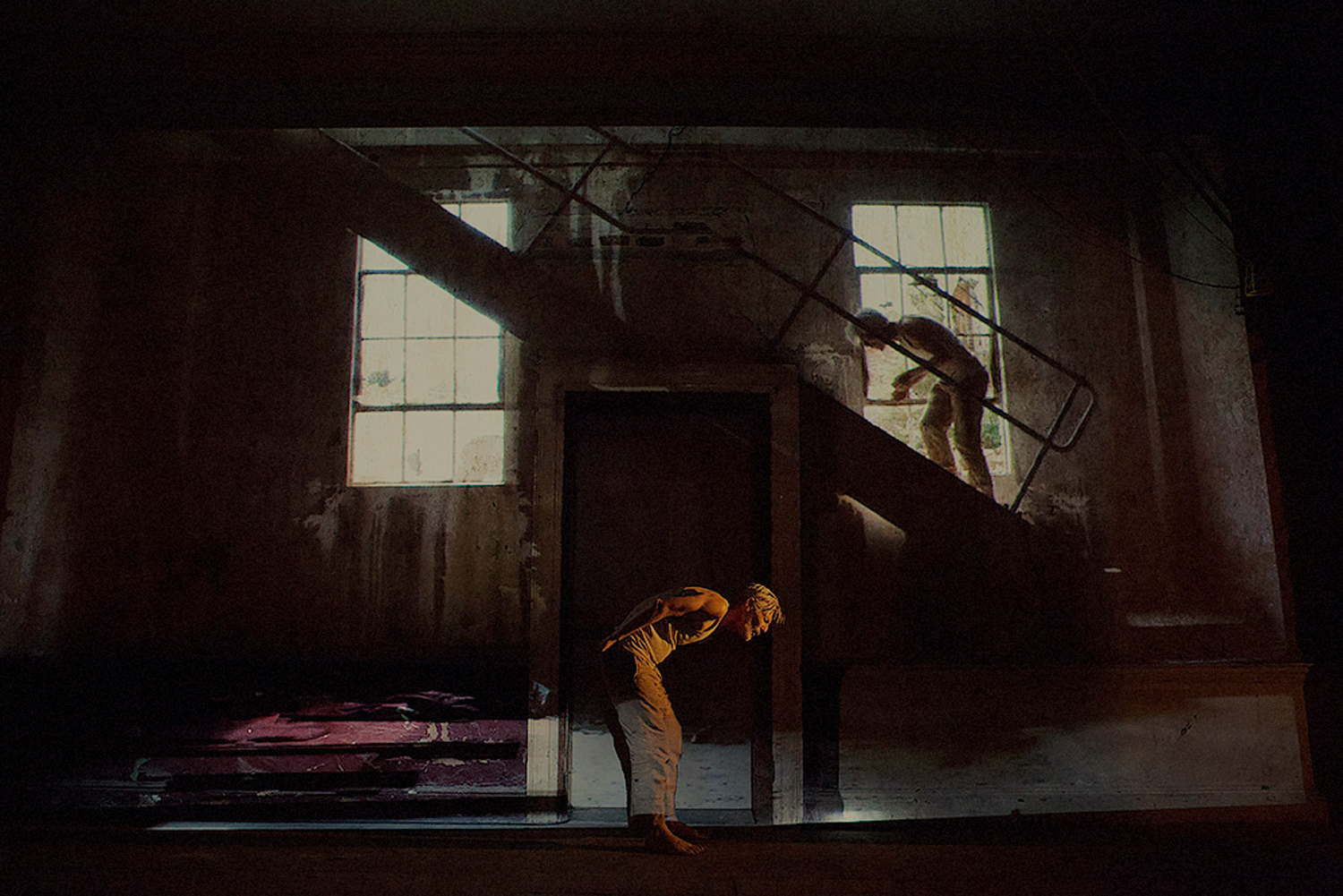Samuel Beckett’s Fizzles
“The title of Beckett’s Fizzles, a collection of prose fragments published in the mid-1970’s, suggests something that peters out almost as soon as it gets going. Narrative or dramatic action is replaced by the efforts of a voice to conjure a body glimpsed in slow motion, tramping a ruined landscape, or trapped in an interior space. Both voice and body progress in fits and starts, repetitions and revisions, before of course fizzling out. But before they do, these haunting fragments vividly evoke the struggle to be, to be seen, to remember, and to tell of a life lacking in momentous events, through the fleeting image of a hand slowly raised or lowered, the lick of a wall in an endless tunnel, or the intimation that one’s life was lived by someone else all along.”
— Anna McMullan, University of Reading
Samuel Beckett’s Spartan prose work, Fizzles. Words; body; image; projection; sculpture; architecture; sound; silence; light and dark. Raymond Keane performs using his recorded voice as score and body as text. Directed by Sarah Jane Scaife, in one of the most resonant architectural spaces of Dublin’s past in Henrietta Street.
“The director might demure at the continued surgical comparison, but this production, like the last, functions as a single flawless operation, physical performance, video design, lighting and sound design all in perfect accord. The result is like a scalpel penetrating to the shifting, elusive heart of Beckett’s brief texts and lifting each, with infinite care, up to the carefully filtered light.”
— John McKeown, Exeunt Magazine
Photo by Hazel Coonagh.
Directed and Designed
by Sarah Jane Scaife
Performed
by Raymond Keane
Credits
Video Design
Kilian Waters
Lighting Design
Paul Keogan
Sound Design
Tim Martin
Producer
Kate Lennon
Production Manager
Lianne O’Shea
Photographer
Hazel Coonagh
Supported by The Arts Council, Dublin City Council, Red Rua, The Samuel Beckett Summer School and The Irish Theatre Institute
The Performance Site:
14 Henrietta Street
No 14 was built for Richard Viscount Molesworth, between 1748–1755 along with Nos. 13 and 15 in a single building campaign by Luke Gardiner. Along with No.3 these were the last houses to be constructed on Henrietta Street, which was laid out almost 20 years before in 1729. The architect is unknown. The plan of the house centres around an impressive two-storey entrance stairhall compartmentthat was lost when the house was converted to tenements in the 1890s. The distinguished 18th century residents of the house (including John Bowes, Lord Chancellor of Ireland, and Charles Viscount Dillon) gave way to a succession of legal professionals in the first half of the 19th century. From 1850–60 the house was the headquarters of the Encumbered Estates Court, who auctioned off bankrupted country estates. The house is now most associated with almost a century of tenement life. The worn floorboards, flaking wall paint, strips of wallpaper, scribbles and nail marks on the walls are all fragile remnants of this time. In 1901 seventeen families amounting to 100 people lived in the house, while over 800 lived on the street.
Henrietta Street, Dublin.
“This is a show for Beckett enthusiasts and first-timers alike. Stepping into an older Dublin, Fizzles is an engaging and haunting performance.”
— Ciara Murphy, The Public Reviews
“Here, director Sarah Jane Scaife transplants three of his Fizzles prose fragments to a crumbling former tenement building – an atmospheric setting, beautifully enhanced – but whose own performance hardly compares to Raymond Keane’s.”
— Peter Crawley, Irish Times
The Pigeon House Generating Station
“The Pigeon House Generating Station was built in stages between 1902 and 1940 by Dublin Corporation. It is situated in the periphery of the city out in Dublin Bay at the end of the Pigeon House Road (begun 1717), a place we now call the Poolbeg Peninsula. The place has a rich history. The power station was built on the site of the Pigeon House Fort, which was established there after the 1798 Rebellion. It closed in 1897, and only remnants of the military era survive today. Before it was a military fort, the site was developed as a harbour for the city of Dublin. The harbour (1791) and Pigeon House hotel (1793) survive to this today. The power station was handed over to the newly‐formed ESB in 1927, coming under the direction of the Free State Government. It was replaced by the Poolbeg Powerstation and chimneystacks during the early 1970s.” — Charles Duggan, Heritage Officer, Dublin City Council.
“Director, Sarah Jane Scaife, has created something both wondrous and frightening, she has perfectly blended the intense darkness of life with the beautiful fragility of the light, but that really is Beckett at its best.”
— Fringe 2014, Meg.ie
“It’s not often that you leave a theatre performance feeling that you have been privileged to be present. But I felt that after Company SJ’s adaptation of Beckett’s Fizzles as part of their Beckett in the City project.
…This was breathtaking paradoxically life-affirming theatre.”
— Emer O’Kelly, The Sunday Independent



